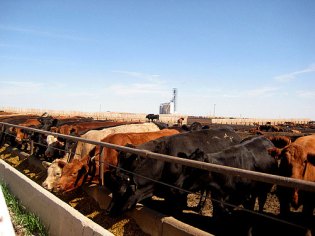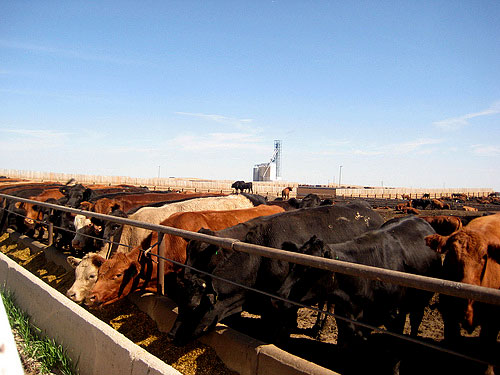
Photo by cistal.
Late in the day Thursday, a New York court passed a ruling that will require the FDA to get serious about antibiotics in meat.
The lawsuit, brought by the Natural Resources Defense Council (NRDC), Center for Science in the Public Interest, Food Animal Concerns Trust, Public Citizen, and Union of Concerned Scientists, is a pretty big deal. But to understand it, we must step back in time to 1977, when the FDA saw the first clear evidence that connected low doses of growth promoting antibiotics in animals to the existence of antibiotic-resistant bacteria capable of infecting people.
Since then, the agency has essentially sat on the information, while making vague claims about its intentions to regulate antibiotics, drafting a weak set of voluntary guidelines in 2010, and then formally declaring that it would end its attempt at any mandatory restrictions on the drugs late last year.
In his blog post on the NRDC website, lead attorney Avinash Kar explained that the judge determined that once the FDA discovered these drugs were unsafe for consumers or animals, the agency was obligated to withdraw approval for their use in animal feed. But they failed to do so. Kar writes:
FDA caved to industry pressure and proceeded to do nothing to regulate the use of penicillin and tetracyclines in livestock feed for 35 years. NRDC and our partners brought a lawsuit last May to force the FDA to act.
Wired’s Maryn McKenna, who broke the story last night on her blog, Superbug, points out that the ruling does not “compel the FDA to ban growth-promoter (or ‘feed efficiency’) use of antibiotics.” She adds: “What it does appear to do, though, is require the FDA to follow through on a process that it began in 1977.” And, considering how much pressure the FDA faces from the meat industry, that follow-through is likely to be a long, painful process. As Kar writes:
Yesterday’s ruling represents a huge public health victory and one of the most important advancements in the fight against antibiotic resistance in the last 35 years. But the fight is far from over: further court proceedings will likely be required to establish a timeline for FDA to act, and FDA could appeal the decision which could delay action for months or even years.
Of course, even a drawn-out process is better than no process at all. And it couldn’t have come a day too soon. Not only has recent research uncovered a smoking gun connecting MRSA and antibiotic use, but Food Safety News recently reported that drug resistance microbes linked to livestock antibiotic use have now been found in soil. The article reads:
Mounting scientific evidence shows that animal antibiotics are contributing to a rise in drug-resistant bacterial diseases among humans. But a new study [PDF] out of Poland has found high levels of these antibiotic-proof pathogens in the natural environment as well. And yet again, animal antibiotics seem to be the culprit.
Researchers at the University of Warsaw tested soil samples from farmland, vegetable gardens, composted soil and forest soil, finding the greatest diversity of antibiotic-resistant bacteria in vegetable garden and fruit orchard soils, both of which had been treated with manure.
When antibiotic-resistant microbes are so prevalent they show up in farmed fruits and vegetables, we know we really have a problem.




